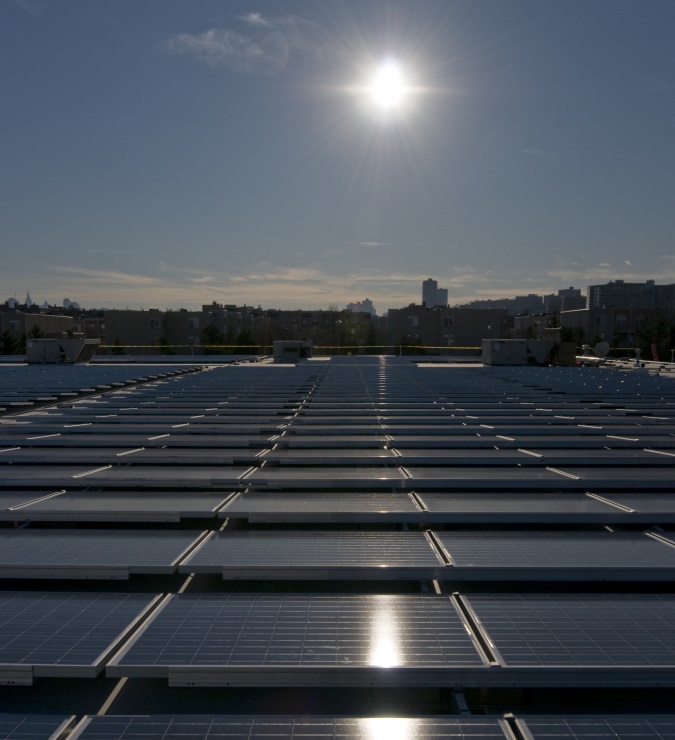Introduction
Solar photovoltaic (PV) developments are a part of the energy mix all over the world, with global capacity exceeding 303 GW[1]. A persistent problem for developers is reflections from the PV panels causing nuisance and/or a safety hazard.
Figure 1: A PV Reflection.
Who is affected?
The most commonly affected parties are:
- Airports (safety).
- Railway operators (safety).
- Road users (safety).
- Local residents (amenity).
The above is not an exclusive list.
Are all concerns equal?
Planning authorities may add more weight to some parties than others. In principle, a potential impact on a large airport could be seen as more important than a potential impact on a small number of local residents.
In reality, however, objections from any of the parties listed in the previous section can stop a PV development going ahead. In some cases, existing developments have been covered[2] or removed[3] due to complaints.
Solutions
Most modern solar panels are available with some kind of anti-reflective properties. This could be a coating or an internal structure that minimises reflections in some way. Some manufacturers even specifically claim[4] that aviation concerns are not applicable based on the low reflectivity of their modules.
Increasingly, planning authorities and stakeholders require some evidence that reflections have been considered and shown to be insignificant. The exact criteria vary depending on what the concern is, a full breakdown is not presented here for the sake of brevity – feel free to comment with any specific question on this topic.
Impacts can be reduced or eliminated by modifying the panel configuration or provision of screening.
What to do
Broadly speaking, the following steps need to be taken:
- Identify potentially affected parties.
- Undertake modelling and/or site visits to determine the potential impact – Pager Power has undertaken 300 glint and glare assessments and has produced comprehensive guidance on how to go about this, which can be downloaded here.
- Design a mitigation solution if required.
- Make the assessment results available to the relevant stakeholders and the planning authority.
References
[1] Hayward, M, 2013, Manchester airport remains in dark over solar-panel glare solution, New Hampshire Union Leader (http://www.unionleader.com/apps/pbcs.dll/article?AID=/20130807/NEWS05/130809503), last accessed January 2018
[2] Scrivener, D, 2015, Ailsworth resident has solar panels removed following glare complaint, Pager Power (https://www.pagerpower.com/news/rooftop-solar-panel-removal-ailsworth-uk-after-glare-complaint-2015/), last accessed January 2018
[3] PV Europe, 2018, Kioto Solar’s new power deflect module (http://www.pveurope.eu/Products/Solar-Generator/Solar-modules/Kioto-Solar-s-new-power-deflect-module), last accessed January 2018
[4] International Energy Agency (2017), PVPS Snapshot of Global Photovoltaic Energy Markets 2016 (http://www.iea-pvps.org), last accessed January 2018
Image accreditation: Solar panels by Kimco Realty via flickr / CC BY-ND 2.0 / Image cropped and resized from original.

